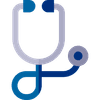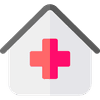![Healthy Matters]() Pharmacist Tips | Dosages | Side effects
Pharmacist Tips | Dosages | Side effects![Healthy Matters]() Nutritionist Tips | Facts | Precautions
Nutritionist Tips | Facts | Precautions![Healthy Matters]() Practitioner Tips | Dosages | Side effects
Practitioner Tips | Dosages | Side effects![Healthy Matters]()
![Healthy Matters]()
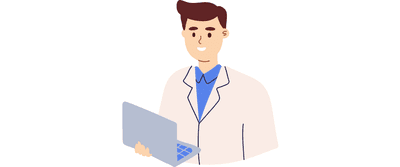
Obstructive Sleep Apnea: How to Survive Breathless Nights
5 min read
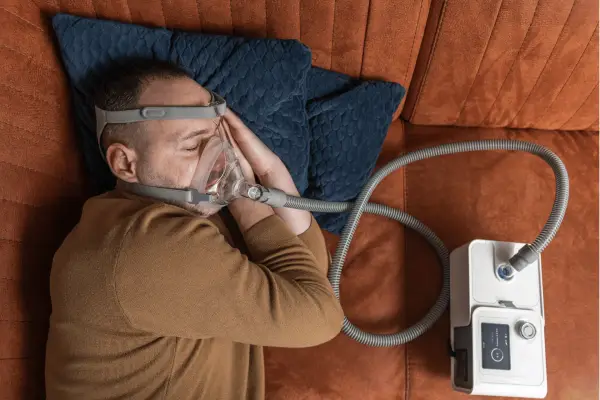
Obstructive sleep apnea (OSA) is a disorder characterized by obstructive breathing during sleep. It can make you sleepy during the day and impact your quality of life. Obstructive sleep apnea is becoming more and more common in Hong Kong. The estimated prevalence of OSA in North America is 15-30% for males and 10-15% for females (for adults between the age of 30 to 70). However, a lot of people often go undiagnosed. Read on to learn more about the symptoms, causes, and treatment of obstructive sleep apnea.
Obstructive sleep apnea: What is it?
Obstructive sleep apnea (OSA) occurs when there is reduced airflow into the lungs during sleep due to narrowing or obstruction to the upper airway. Normally, as we sleep, air can flow freely into our lungs. However, vibration, narrowing and obstruction can occur in the nose, nasopharynx (back of the nose), soft palate, oropharynx (back of the mouth), and throat leading to snoring and OSA. (Often it is a combination of multiple upper airway sites which causes OSA.) When the flow of air and breathing is reduced or stopped for a short time, there may be some mild to moderate hypoxia (lack of oxygen). The brain will sense this and make your heart beat faster and breathe faster. After a short time, some head movement occurs and the upper airway reopens, then breathing starts again with a gasp, grunt or choking. The oxygen level in the blood returns to normal and snoring returns. However, this pattern can repeat itself (which can happen up to hundreds of times a night) in people with obstructive sleep apnea.
Obstructive sleep apnea can be further characterized into two types of breathing interruption. If the upper airway narrows and causes a partial blockage of the airway lasting for 10 seconds or more, it is called hypopnoea. If there is a total blockage of the upper airway lasting for 10 seconds or more, it is referred to as apnoea (no breathing).
Sleep apnea types
Obstructive sleep apnea is a common type of sleep apnea. There are three different types of sleep apnea, namely:
- Obstructive sleep apnea - The upper airway physically narrows and closes, blocking air movement
- Central sleep apnea - The respiratory control center in the brain doesn’t give the command to breathe regularly (not trying to take a breath at all)
- Mixed sleep apnea - A combination of the above two sleep apnea types
Obstructive sleep apnea symptoms and signs
Obstructive sleep apnea is difficult to spot as the symptoms are usually first noticed by the patient's partner, friend, or family members, and not by the patient themselves.
Common symptoms of obstructive sleep apnea mainly happen while asleep, including:
- Loud snoring
- Stop breathing or struggling to breathe
- Making gasping, snorting, or choking noises
- Waking up during the night
- Sudden jerky body movement
- Grinding teeth during sleep
These repeated sleep interruptions can hugely impact your sleep quality. Symptoms of obstructive sleep apnea when awake may include:
Obstructive sleep apnea causes and risk factors
Obstructive sleep apnea (OSA) happens when there is a blockage or obstruction to the upper airway, which stops you from breathing properly while sleeping.
Obstructive sleep apnea has been found to link with:
- Overweight or obese - excess body fat can increase the soft tissue bulk in the neck, placing extra strain on the throat muscle
- Large neck size - 43 cm (17inches) or more have an increased risk of developing OSA
- Male - the pattern of body fat distribution in males may increase the risk of developing OSA
- Increasing age - OSA can occur at any age, but it is more common in middle-aged
- Anatomical variation - Deviated nasal septum, large Adenoids, large tonsils, small lower jaw, large tongue and craniofacial abnormalities
- Medical conditions - people with medical conditions such as allergic rhinitis (nasal obstruction), recurrent tonsillitis leading to large tonsils, Down’s syndrome, hypothyroidism, chronic cardio-pulmonary diseases, and type 2 diabetes are at a higher risk
Obstructive sleep apnea diagnosis
If you are suspected to have Obstructive sleep apnea (OSA), you can simply try the Epworth Sleepiness Score questionnaire. For a proper diagnosis of OSA, patients can visit a sleep apnoea specialist for a clinical assessment with the aid of investigations observing their sleep at home or in the hospital.
There are different kinds of assessments used to diagnose obstructive sleep apnea, for example:
- Oximetry - A small device with a sensor called a pulse oximeter can be clipped onto your finger to measure the blood oxygen level and heart rate, it is usually done at home
- Portable peripheral arterial tonometry (WatchPAT) - A small portable device to be worn on the wrist like a watch, which can generate a sleep report and measure heart rate, body position, snoring, blood oxygen level, chest motion, and sleep cycle. It can be done easily at home
- Polysomnography (PSG) - A painless and non-invasive procedure to record the sleep pattern, which can assess sleep and wakefulness by measuring the heart rate, breathing pattern, brain waves, eye movements, and muscle movements, snoring, and blood oxygen level during sleep. This procedure is an overnight study which is usually done in a hospital or sleep laboratory
- Sleep Endoscopy - Once a diagnosis of OSA is established, a sleep endoscopy is used to assess sites of the upper airway narrowing and obstruction.
Obstructive sleep apnea treatments
Obstructive sleep apnea (OSA) may need ongoing treatment to control the symptoms. The treatment focuses on reducing the number of breathing pauses while asleep.
Some lifestyle changes can be made to manage the symptoms of OSA, such as:
- Maintain a healthy weight - Losing weight can remove excess body fat which can add bulk to the neck
- Stop smoking - Smoking can damage the airway and make them more vulnerable and more likely to collapse while sleeping
- Reduce alcohol consumption - Alcohol is linked with a higher risk of sleep apnea
- Keep active - Exercise can improve and alleviate OSA symptoms
- Maintain good sleep habits - A good sleeping habit can help your brain and internal body clock to get used to a set routine and improve sleep quality. Such as going to bed and getting up at the same time every day and keeping the bedroom dark and quiet
Other therapeutic obstructive sleep apnea management includes:
- Mandibular advancement devices (MADs) - a custom-made dental device to move the lower jaw forward, which prevents the tongue base from blocking the upper airway
- Continuous Positive Airway Pressure (CPAP) - a simple machine that blows air at pressure into the upper airway (via the nose) to stop it from collapsing or narrowing during sleep
- Surgery - surgery often may be done to re-establish normal airflow and prevent obstruction in the upper airway. These procedures may be curative for some patients (especially for children). These procedures include: Septoplasty, Endoscopic turbinoplasty, Adenoidectomy, Tonsillectomy, Uvulopalatopharyngoplasty, and hypoglossal nerve stimulation.
Obstructive sleep apnea complications
If left untreated, obstructive sleep apnea can hugely impact the quality of life and potentially lead to:
- High blood pressure
- Fatty liver
- Glaucoma
- Insulin resistance and diabetes
- Depression or mood swings
- Difficulty concentrating at work or school
- A higher chance of having a stroke
- A higher chance of having a serious car accident caused by sleepiness
- Pulmonary hypertension or right heart failure
FAQs
In obstructive sleep apnea, there is narrowing or obstruction to the upper airway, leading to decrease airflow into the lungs. There is snoring and then often a period of no breathing. Then suddenly some gasping, grunting or choking leads to restarting of breathing/snoring.
There are many therapeutic options to manage obstructive sleep apnea such as surgery, Continuous Positive Airway Pressure (CPAP) and oral appliance. In some instances, surgery can even cure obstructive sleep apnea. Lifestyle modifications such as losing weight are important to lessen the obstruction.
Obstructive sleep apnea is associated with many risk factors, and large neck size is one of them. Other risk factors include being overweight or obese, middle-aged male, having large tonsils, a small lower jaw, and other medical conditions such as Hypothyroidism, type 2 diabetes, and Down’s syndrome.
This article was independently written by Healthy Matters and is not sponsored. It is informative only and not intended to be a substitute for professional medical advice, diagnosis or treatment. It should not be relied upon for specific medical advice.
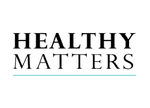
Your health resource, made in Hong Kong
Healthy Matters is Hong Kong’s leading health resource. Our mission is to help you make better health decisions and take control of your health.
Our team of experts is committed to producing reliable health content that is accurate, engaging and relevant, to cover your health & wellness journey from prevention to treatment.
Whether you are looking for trusted information on health conditions, wellbeing or looking for the right doctor or service in Hong Kong, we’re here to help!
Your health matters. Begin your health journey with Healthy Matters today!





























